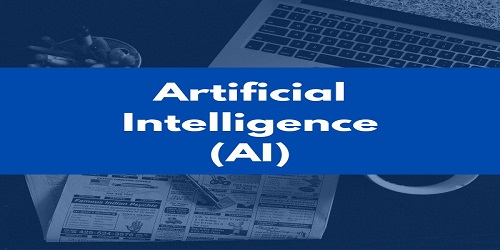Table of Contents
What is Artificial Intelligence?
The term Artificial Intelligence was coined by John McCarthy in 1956.
John McCarthy defined Artificial Intelligence is the science and engineering of making intelligent machines, especially intelligent computer programs. It is related to the similar task of using computers to understand human intelligence, but AI does not have to confine itself to methods that are biologically observable.
Patterson defined Artificial Intelligence is a branch of computer science that deals with the study and creation of computer systems that exhibit some form of intelligence.
Barr and Feigenbaum defined Artificial Intelligence as concerned with designing intelligent computer systems which exhibit the characteristics we associate with intelligence in human behavior”.
Charniak and McDermott defined Artificial Intelligence is the study of mental faculties through the use of computational models.
Winston defined Artificial Intelligence is the study of the computations that make it possible to perceive, reason and act.
In simple words, Artificial Intelligence may be defined as the ability of a computer system to mimic human-like cognitive functions such as thinking, perceiving, learning, problem-solving, and decision-making.
How does Artificial Intelligence work?
Artificial Intelligence works like human intelligence. It is a technology that allows machines and computer applications to mimic human intelligence i.e. using maths and logic, a machine and computer system simulates the reasoning that humans use to learn from new information and make decisions. An artificially intelligent machine and computer system upgraded their intelligence from the existing data and can then learn from its errors to increase its accuracy. Artificial Intelligence processes new information extremely quickly and accurately, which makes it useful for complex scenarios such as speech recognition, pattern recognition, memory organization, virtual assistants, etc.
Types of Artificial Intelligence:
(1) Narrow AI- Artificial Intelligence is said to be narrow when the machine can perform a specific narrow task better than a human. It is also called weak AI.
(2) General AI- Artificial Intelligence reaches the general state when it can perform any intellectual task with the same accuracy level as a human would.
(3) Super AI- A computer system that has achieved artificial superintelligence would have the ability to outperform humans in almost every field, including scientific creativity, general wisdom, and social skills.
Applications of Artificial Intelligence:
Artificial Intelligence has applications in all fields of human studies, such as finance and economics, environmental engineering, chemistry, computer science, and so on. Some of the applications of Artificial Intelligence are listed and illustrated below:
(1) Self-driving Cars- Advances in artificial intelligence have brought us very close to making the decades-long dream of autonomous driving a reality. AI algorithms are one of the main components that enable self-driving cars to make sense of their surroundings, taking in feeds from cameras installed around the vehicle and detecting objects such as roads, traffic signs, other cars, and people.
(2) Gaming- In the gaming industry, Artificial Intelligence is used to create video games where basic methods are used to control non-player characters. Some gaming applications use Artificial Intelligence to alter a player’s emotional state by modifying environmental conditions, adding a new level, controlling music, analyzing a player’s behavioral algorithm, and using GPS technologies.
(3) Financial Services- Artificial Intelligence can ensure early detection of financial risk and systemic failures, and automation to reduce malicious intent in financial systems, such as market manipulation, anomalous trading, etc.
(4) Virtual Customer Assistance (VCA)- Another application of Artificial Intelligence is VCA. Call centers use VCA to predict and respond to customer inquiries outside of human interaction. Voice recognition, coupled with simulated human dialog, is the first point of interaction in a customer service inquiry. Higher-level inquiries are redirected to a human.
(5) Natural Language Processing- This field deals with understanding text. We can interact with a machine by typing natural language sentences. Search engines use this extensively to deliver the right search results.
(6) Digital Assistants and Smart Speakers- Siri, Alexa, Cortana, and Google Assistant use artificial intelligence to transform spoken words into text and map the text to specific commands. AI helps digital assistants make sense of different nuances in spoken language and synthesize human-like voices.
(7) Facial recognition- It is one of the most popular applications of artificial intelligence. It has many uses, including unlocking your phone, paying with your face, and detecting intruders in your home. But the increasing availability of facial-recognition technology has also given rise to concerns regarding privacy, security, and civil liberties.
(8) Robotics- It is the major field of artificial intelligence. It is concerned with the design, manufacturing, and implementation of computer-controlled devices, called Robots. Robots are widely used in many industries like coal mining, car manufacturing, chemical industries, etc.
(9) Computer Vision- This field of artificial intelligence enables computers to recognize shapes and patterns through a technique called pattern recognition. Some of the real-life applications of computer vision are barcodes in supermarkets, financial data and business forms, computer-aided drawings, symbols and information from maps, x-rays and blood samples, traffic control cameras, geophysical imaging technologies, satellite imagery, image recognition, and rescue efforts.
(10) Healthcare Industry- Artificial Intelligence plays a vital role in the healthcare industry by detecting several diseases in their preliminary stages (for example- cancer) and setting up virtual nurses (a system that monitors the health of the patients undergoing treatment and suggests treatment plans based on pattern recognition algorithms that can diagnose various ailments). AI Genetics- a major field that identifies genes responsible for hereditary diseases- identifies the genes responsible for a particular disease, which, in turn, helps edit the genes and eradicate their impact/effect. Artificial Intelligence wearable devices can also help in the self-monitoring of health situations.
(11) Life Sciences- Artificial Intelligence is actively applied to review complex data sets that are useful in testing new medicines, helping life science organizations get effective medicines to market faster.
(13) Manufacturing Sector- Artificial Intelligence can help predict more reliable demand forecasting, a flexible responsive supply chain, quality assurance, accurate scheduling, etc. It can complement human capabilities and improve capital efficiency by enabling humans to focus on parts of their role that add the most value.
(14) Neural Networks- They are knowledge-based computer systems that are designed to learn by observations and repetition just like human beings. These include generalization ability, adaptivity, fault tolerance, learning ability, massive parallelism, distributed representation & computation, inherent contextual information processing, and low energy consumption.









Comments (No)